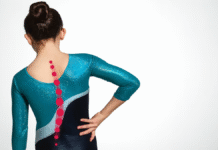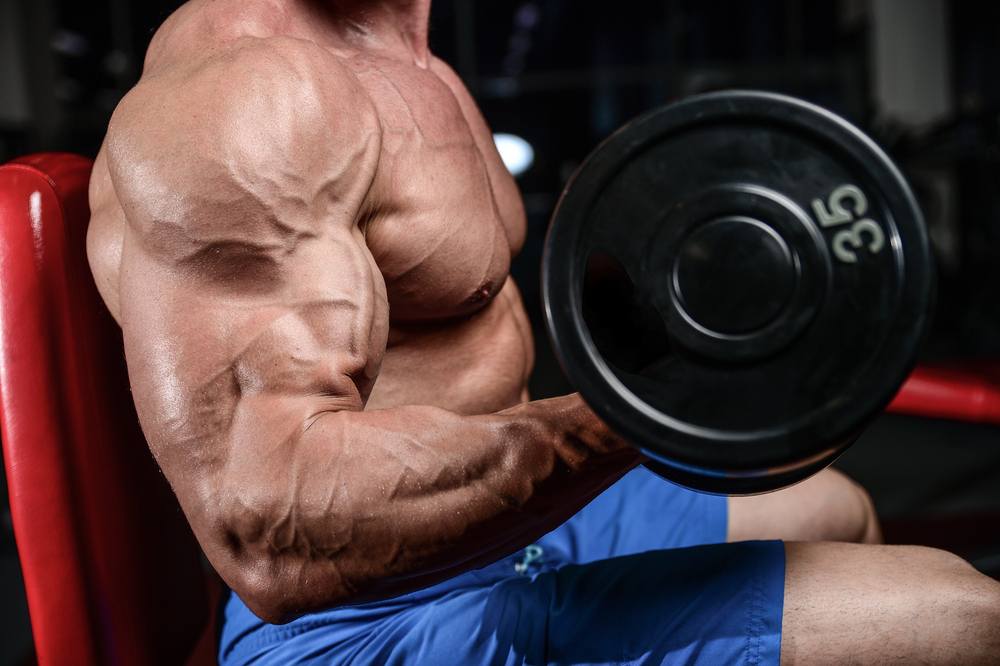Introduction
The deadlift, remains one of the most controversial and debated exercises in the world of bodybuilding. On the one hand, many followers consider it an indispensable pillar of any training program due to its benefits for overall muscle development. On the other hand, voices are raised to warn of the potential risks it presents. This comprehensive guide, based on scientific references, aims to explore the various aspects of the deadlift, understand the reasons for its controversy, propose alternatives and provide recommendations for its safe execution.
The deadlift is often praised for its ability to work multiple muscle groups simultaneously, with a particular emphasis on the back, legs, glutes, and core. This versatility makes it a go-to exercise for those looking to build functional strength and balanced musculature. However, performing it requires precise technique and proper form, as mistakes can lead to injuries, particularly to the back.
Much of the controversy surrounding the deadlift lies in its potential for injury, particularly to the lower back. Critics point out that the stress placed on the spine during the deadlift could increase the risk of injury, especially for individuals with a history of back problems. However, it is important to note that the scientific research on this topic is mixed, and many experts agree that the deadlift can be safe and beneficial if performed correctly.
To minimize risk, proper technique is crucial when performing the deadlift. This includes a correct starting position, proper spinal alignment, core contraction, and controlled lifting. Using weights appropriate to individual capacity is also essential to avoid excessive overload.
For those who prefer to avoid the traditional deadlift due to safety concerns or physical limitations, there are effective alternatives. Exercises such as Romanian deadlifts, sumo deadlifts, or exercises that specifically target the back and leg muscles can provide similar benefits while reducing stress on the spine.
So, while the deadlift is a powerful and versatile exercise, it is essential to approach its inclusion in a training program with caution and a thorough understanding of technique. For those who perform it correctly and do not have any specific contraindications, the deadlift can be a great asset. However, it is always recommended to consult a healthcare professional or qualified trainer before adding the deadlift to a training program, especially if underlying health conditions are present.

Why is it called Deadlift
The term “deadlift” comes from the act of lifting a “dead” (stationary or inert) weight from the ground. Here’s a more detailed explanation of why it is called the deadlift:
Historical Context
- Literal Meaning: The name “deadlift” refers to lifting a weight that is “dead” on the floor, meaning it is not being supported or assisted by any other force or apparatus. The weight is completely at rest, and the lifter must generate all the force to lift it off the ground.
- No Momentum: Unlike other lifts where the weight might start at a higher position or be part of a continuous movement (like in Olympic lifts such as the clean and jerk or snatch), the deadlift starts from a dead stop. There is no initial momentum, making it a true test of raw strength.
Etymology
- Old English and Middle English Roots: The term “dead” has roots in Old English “dēad,” meaning lifeless or without motion. “Lift” comes from the Old Norse word “lypta,” meaning to raise. Together, they literally describe the action of raising a lifeless weight from the ground.
Practical Application
- Strength Testing: Historically, the deadlift has been used as a measure of a person’s overall strength. It tests the ability to lift a heavy, non-moving object, which is a practical and straightforward demonstration of physical power.
- Functional Strength: The deadlift mimics many real-world tasks, such as lifting heavy objects from the ground, which is why it is often used in strength training and functional fitness routines.
Evolution of the Term
- Powerlifting: The deadlift is one of the three main lifts in powerlifting competitions (alongside the squat and bench press). Its inclusion in competitive lifting helped solidify the term in strength training lexicon.
- Popularity in Fitness: As strength training became more popular in gyms and fitness centers, the deadlift’s straightforward and descriptive name made it easy to communicate and understand.
Comparison with Other Lifts
- Clean and Jerk/Snatch: These Olympic lifts involve lifting the barbell from the floor but incorporate more complex movements and transitions. The deadlift, by contrast, involves a single, continuous motion.
- Squats/Bench Press: These lifts begin with the weight already supported by a rack or stand, whereas the deadlift requires the lifter to overcome the inertia of the weight at rest.
Why Deadlift Can Be Controversial?
The deadlift can be controversial primarily due to two main reasons:
- Stress on the Spine: When performed incorrectly, the deadlift can involve excessive flexion of the spine, increasing pressure on the intervertebral discs. This flexion can potentially lead to long-term injuries, especially if repeated frequently or with heavy loads.
- Risk of Lower Back Injuries: Studies, such as those by Faigenbaum and Myer (2010), suggest that deadlifting can contribute to lower back injuries, particularly among beginners or those with incorrect technique. Poor form, excessive weight, or too rapid progression can increase this risk.
However, it’s important to note that when performed with proper technique and appropriate progression, the deadlift can be an extremely beneficial exercise for strengthening posterior muscles, including those of the back, glutes, and hamstrings. Like any exercise, the key lies in teaching correct technique, providing proper supervision, and respecting individual capabilities to minimize the risk of injuries.
When people started to perform deadlifts ?
The deadlift, a fundamental strength training exercise, has been practiced for centuries, though it has evolved significantly over time. Here’s a brief history of the deadlift:
Ancient Times: Ancient Times: The practice of lifting heavy objects has been integral to human activity since ancient times. In civilizations such as ancient Greece and Egypt, feats of strength were often demonstrated through the lifting of heavy stones and other substantial objects. These activities were not only practical for moving large items but also served as a means of displaying physical prowess and achieving social status. In Greece, for example, lifting heavy stones was part of athletic training and competitions, which were precursors to the modern Olympic Games. Similarly, in Egypt, laborers who built the pyramids and other monumental structures relied on their physical strength, which was honed through the manual lifting and transportation of massive blocks of stone. These early forms of strength training laid the groundwork for the development of more structured and formalized weightlifting practices in later centuries.
19th Century: The deadlift, as we recognize it today, began to take shape in the 1800s. During this period, strength training started to gain prominence, and strongmen like Eugen Sandow and Louis Cyr played crucial roles in popularizing weightlifting exercises, including variations of the deadlift.
Eugen Sandow, often referred to as the father of modern bodybuilding, performed various feats of strength, showcasing his abilities to lift heavy weights. These demonstrations not only entertained audiences but also sparked widespread interest in physical fitness and strength training. Sandow promoted the health benefits of weightlifting and helped establish the foundations of modern bodybuilding and strength sports. His emphasis on proper technique and physical conditioning contributed significantly to the development and formalization of the deadlift as a key exercise in strength training regimens.

Louis Cyr, hailing from Quebec, Canada, was another legendary strongman of the era known for his incredible feats of strength. Born in 1863, Cyr gained international fame for his extraordinary ability to lift heavy weights, including performing impressive deadlift variations. Some of his most famous feats include lifting a platform holding 18 men, which weighed around 4,300 pounds, and lifting a 534-pound weight with one finger. Cyr’s remarkable strength and performances further popularized weightlifting and inspired many to pursue strength training.

Cyr’s achievements demonstrated the potential of human strength and endurance, encouraging the inclusion of exercises like the deadlift in training routines. His legacy lives on in Quebec and beyond, as he remains a symbol of strength and determination. Together, Sandow and Cyr significantly impacted the development of the deadlift, transforming it from a rudimentary test of strength into a fundamental exercise in modern strength training and bodybuilding. Their contributions helped pave the way for the structured and disciplined approach to weightlifting that we see today.
Early 20th Century: The deadlift gained more structure and form with the rise of organized weightlifting competitions. As weightlifting became more formalized, the techniques and rules surrounding the deadlift were refined, making it a more standardized exercise.
In the 1950s and 1960s, powerlifting emerged as a distinct sport. Powerlifting focused on maximal strength in three specific lifts: the squat, the bench press, and the deadlift. These competitions provided a platform for athletes to demonstrate their strength in a regulated and competitive environment. The deadlift, in particular, became one of the sport’s three main lifts due to its ability to test overall body strength and power.
The inclusion of the deadlift in powerlifting competitions brought significant attention to the exercise. Athletes began to specialize in perfecting their deadlift technique, leading to advancements in training methods and lifting equipment. This period saw the development of specialized deadlift bars, lifting belts, and footwear designed to optimize performance and safety.
The popularity of powerlifting and the prominence of the deadlift in competitions contributed to the exercise’s widespread adoption in gyms worldwide. It became a staple in strength training programs, recognized for its effectiveness in building muscle mass, improving functional strength, and enhancing athletic performance.
Today, the deadlift remains a fundamental exercise in powerlifting and is also embraced by bodybuilders, athletes, and fitness enthusiasts. Its evolution from a basic test of strength to a highly technical and respected lift highlights the enduring significance of the deadlift in the world of strength training.
Modern Era: The deadlift is now a staple in strength training and is practiced widely in gyms around the world. It’s a crucial exercise for building overall body strength and is used by athletes, bodybuilders, and fitness enthusiasts.
The deadlift’s progression from a test of raw strength in ancient times to a refined exercise in modern strength training highlights its enduring value and effectiveness.
Proper technique for Deadlift
Mastering the proper technique for a deadlift is crucial to maximize its benefits and minimize the risk of injury. Here’s a step-by-step guide to performing a deadlift correctly:
Proper technique:
Setup:
- Stance: Stand with your feet hip-width apart. Your toes should be pointed slightly outward, about 15 degrees.
- Bar Position: Position the bar over the middle of your feet, about an inch away from your shins.
- Grip: Bend at the hips and knees to reach the bar. Use a double overhand grip (both palms facing you) or a mixed grip (one palm facing you, one palm facing away) if lifting heavier weights. Your hands should be just outside your knees.
2. Body Position:
- Hips: Position your hips between your knees and shoulders. Your hips shouldn’t be too high (which can stress the lower back) or too low (which can make the lift more like a squat).
- Back: Keep your back straight with a neutral spine. Avoid rounding or hyperextending your back.
- Chest and Shoulders: Lift your chest and pull your shoulders back slightly. Your shoulder blades should be directly over the bar.
- Head and Eyes: Keep your head in line with your spine, looking at a spot on the ground about 4-6 feet in front of you.
3. Lifting the Bar:
- Engage Your Core: Brace your core by taking a deep breath and holding it to create intra-abdominal pressure.
- Lift Off: Push through your heels and extend your knees while keeping the bar close to your body. Your hips and shoulders should rise at the same rate.
- Hip Drive: As the bar passes your knees, drive your hips forward to stand up tall. Fully extend your hips and knees at the top of the lift.
4. Lowering the Bar:
- Hinge at the Hips: Push your hips back and bend your knees slightly to lower the bar. Keep the bar close to your body and maintain a straight back.
- Return to Start: Lower the bar to the floor by reversing the lift’s motion, bending your knees more once the bar passes them.
5. Breathing:
- Inhale: Before lifting, take a deep breath and brace your core.
- Hold: Hold your breath during the lift to maintain core stability.
- Exhale: Exhale at the top of the lift or after lowering the bar, depending on your preference.
6. Common Mistakes to Avoid:
- Rounding the Back: Keep your back straight and neutral. Rounding the back can lead to injury.
- Starting Too Low or High: Find the right hip position to avoid turning the lift into a squat or placing too much strain on the lower back.
- Bar Path: Ensure the bar moves in a straight line close to your body. Avoid letting the bar drift forward.
- Knee Lockout: Avoid locking out your knees too early. Lift with a coordinated effort between your hips and knees.
7. Additional Tips:
- Footwear: Wear flat-soled shoes for better stability and connection to the ground.
- Use a Mirror or Record Yourself: This helps in checking your form and making necessary adjustments.
- Consult a Professional: If you’re unsure about your technique, seek guidance from a qualified trainer or coach.
Grip Strength:
- Grip Variations: Besides the double overhand and mixed grip, you can use a hook grip (thumb wrapped around the bar with fingers over the thumb) for a stronger hold.
- Grip Training: Incorporate exercises like farmer’s walks, wrist curls, and grip trainers to enhance your grip strength, which is essential for heavier deadlifts.
9. Bar Path:
- Optimal Path: The bar should travel in a straight line from the floor to the lockout position and back down. Any deviation can increase the risk of injury and reduce efficiency.
- Shin Contact: Keep the bar close to your body, almost brushing against your shins and thighs throughout the lift.
10. Advanced Techniques:
- Pause Deadlifts: Pause at various points during the lift (e.g., just below the knees) to build strength and improve technique in those positions.
- Deficit Deadlifts: Stand on a platform to increase the range of motion, which can enhance strength off the floor.
- Rack Pulls: Perform the deadlift from an elevated position (e.g., just below the knees) to focus on the lockout phase and overload the top portion of the lift.
11. Core and Accessory Training:
- Core Stability: Exercises like planks, hanging leg raises, and ab rollouts can enhance core stability, which is crucial for maintaining a neutral spine during the deadlift.
- Hamstring and Glute Strength: Incorporate exercises like Romanian deadlifts, glute bridges, and hamstring curls to strengthen the posterior chain muscles involved in the deadlift.
12. Recovery and Mobility:
- Stretching and Mobility Work: Focus on stretching the hamstrings, hip flexors, and lower back. Foam rolling and dynamic stretches can also improve mobility and reduce muscle tightness.
- Rest and Recovery: Ensure adequate rest between deadlifting sessions to allow for muscle recovery and adaptation. Overtraining can lead to fatigue and increased risk of injury.
13. Injury Prevention:
- Listen to Your Body: Pay attention to any signs of discomfort or pain. If you experience sharp pain, especially in the lower back, stop immediately and reassess your form.
- Form Checks: Periodically review your form, either through video analysis or feedback from a coach, to ensure you maintain proper technique as you progress.
14. Programming:
- Periodization: Incorporate the deadlift into a well-rounded strength training program that includes variations and other compound lifts like squats and bench presses.
- Volume and Intensity: Adjust the volume (sets and reps) and intensity (weight) based on your training goals, whether it’s strength, hypertrophy, or endurance.
15. Mental Focus:
- Visualization: Visualize the lift before performing it. This mental preparation can enhance focus and execution.
- Mind-Muscle Connection: Concentrate on engaging the correct muscles throughout the lift. This helps ensure proper form and muscle activation.
Deadlift Variations for Specific Goals:
- Sumo Deadlift: This variation involves a wider stance and a more upright torso, which can reduce strain on the lower back and emphasize the inner thighs and hips.
- Trap Bar Deadlift: Using a trap bar (hex bar) allows for a more upright torso and neutral grip, reducing stress on the lower back and making it a good option for beginners or those with back issues.
17. Hand and Wrist Position:
- Chalk: Using chalk on your hands can improve grip by reducing sweat and increasing friction between your hands and the bar.
- Wrist Straps: For very heavy lifts or when grip strength is a limiting factor, wrist straps can help maintain your hold on the bar, though they should be used sparingly to ensure your grip strength continues to develop.
18. Advanced Programming Techniques:
- Wave Loading: Incorporate wave loading (e.g., 3 sets of 5, 3 sets of 3, 3 sets of 1) to build strength and power by varying the rep ranges and loads within a workout.
- Conjugate Method: Rotate different deadlift variations and accessory lifts each week to continuously challenge your muscles and avoid plateaus.
19. Neuromuscular Efficiency:
- Speed Work: Incorporate lighter deadlifts performed explosively to improve neuromuscular efficiency and power output. This can be done with a focus on accelerating the bar as fast as possible while maintaining form.
- Plyometrics: Exercises like box jumps or broad jumps can enhance explosive power, which can translate to more powerful deadlifting.
20. Nutrition and Hydration:
- Pre-Workout Nutrition: Consume a balanced meal with carbohydrates and protein about 1-2 hours before your workout to fuel your muscles and optimize performance.
- Hydration: Maintain proper hydration to ensure optimal muscle function and reduce the risk of cramps and fatigue.
21. Mental Training:
- Goal Setting: Set specific, measurable, attainable, relevant, and time-bound (SMART) goals for your deadlifting progress to stay motivated and focused.
- Positive Reinforcement: Use positive self-talk and visualization techniques to build confidence and mental resilience during challenging lifts.
22. Posture and Muscle Balance:
- Postural Awareness: Pay attention to your overall posture throughout the day. Good posture habits can translate to better lifting mechanics.
- Muscle Balance: Ensure that your training program includes exercises that balance the muscles used in deadlifting. For example, strengthen your quadriceps and hip flexors to balance the strong posterior chain.
23. Environmental Considerations:
- Training Environment: Ensure you are lifting in a safe and appropriate environment. Use a platform or area with proper flooring to absorb shock and provide stable footing.
- Equipment Maintenance: Regularly check your barbell and weights for any damage or wear and tear that could compromise safety.
24. Consistency and Patience:
- Consistency: Make deadlifting a regular part of your training routine. Consistent practice is key to mastering technique and building strength.
- Patience: Progress in deadlifting takes time. Be patient with your progress and focus on incremental improvements.
25. Community and Support:
- Training Partners: Lifting with a partner or group can provide motivation, accountability, and real-time feedback on your form.
- Online Communities: Join online forums or social media groups dedicated to strength training and deadlifting to share tips, experiences, and support.
Alternatives to Deadlift
- Rack Pulls: This is a variation of the deadlift where the bar is placed at a higher height, usually at knee level. This reduces the range of motion and places more emphasis on the upper back and trapezius muscles.
- Trap Bar Deadlift: Using a trapeze bar can reduce stress on the spine (Swinton et al., 2011).
- Sumo Deadlift: This variation involves a wider stance with the feet pointed outward. It can reduce stress on the lower back while targeting more of the adductor muscles and quadriceps.
- Romanian Deadlift (RDL): This exercise targets the hamstrings and glutes while minimizing spinal flexion (Andersen et al., 2018).
- Single-Leg Romanian Deadlift: This exercise focuses on balance and stability by working one side of the body at a time. It strengthens the hamstrings, glutes, and stabilizer muscles.
- Leg Press: This exercise is typically done on a machine and targets the quads, hamstrings, and glutes while reducing the load on the lower back.
- Pull-Throughs: Using a rope or low pulley, pull-throughs target the muscles of the glutes, hamstrings, and lower back.

Recommendations for a Safe Deadlift
- Proper technique: Correct technique is crucial to minimize risk. Maintaining a natural lumbar lordosis is essential (Gullett et al., 2009).
- Adequate warm-up: A specific warm-up prior to the deadlift can reduce the risk of muscle injuries (Fradkin et al., 2010).
- Careful programming: Incorporate the deadlift gradually into your training program and adjust the volume and intensity according to your skill level (Helms et al., 2016).
List of recommandations:
Performing a deadlift safely involves mastering technique, understanding your body’s limits, and progressively challenging yourself. Here are key recommendations to ensure a safe deadlift:
1. Learn Proper Technique:
Mastering correct form is crucial. Start with a hip-width stance, grip the bar just outside your legs, and keep your back straight with a natural arch. Engage your core and hinge at the hips to lower the barbell, keeping it close to your body throughout the movement.
2. Warm-Up Adequately:
Prioritize dynamic stretches and movements that activate muscles involved in the deadlift, such as hip flexors, hamstrings, and lower back. Warm-up sets with lighter weights help prepare your body for heavier lifts.
3. Progress Gradually:
Begin with manageable weights to focus on form. Gradually increase weight as your technique improves and your muscles adapt. Avoid significant jumps in weight to prevent strain on your back and joints.
4. Focus on Breathing:
Maintain a consistent breathing pattern. Inhale deeply before lifting, hold your breath briefly during the lift to stabilize your core, and exhale as you return to the starting position. Avoid breath-holding for extended periods to prevent spikes in blood pressure.
5. Use Proper Footwear:
Wear flat-soled shoes to ensure stability and minimize the risk of slipping during the lift. Avoid using shoes with elevated heels, as they can alter your lifting mechanics and increase strain on your lower back.
6. Avoid Overextension:
At the top of the lift, avoid leaning back excessively, which can strain your lower back. Instead, stand tall with hips fully extended while maintaining a neutral spine position.
7. Know Your Limits:
Listen to your body and respect your limits. If you experience pain, especially in your lower back, stop immediately and reassess your technique. Consult with a fitness professional if you’re unsure about proper form or if you have existing back issues.
8. Include Recovery Practices:
After deadlifting, incorporate stretching exercises that target the lower back, hamstrings, and hip flexors to promote flexibility and reduce muscle tension. Adequate rest between sessions allows your muscles to recover and adapt.
9. Supervision and Feedback:
If possible, train under the supervision of a qualified coach or trainer who can provide feedback on your technique and help correct any errors. Video recording your lifts can also offer valuable insights into your form.
10. Variations and Alternatives:
Explore variations of the deadlift, such as sumo or trap bar deadlifts, which may place less stress on the lower back depending on your body mechanics and goals. Incorporating alternative exercises, like Romanian deadlifts or hip thrusts, can also diversify your training regimen while targeting similar muscle groups.
When to Avoid Deadlifting?
- Pre-existing Back Problems: If you have a history of lower back problems, herniated discs, sciatica or other back disorders, deadlifting may be contraindicated. A thorough medical evaluation is recommended.
- Mobility Issues: Mobility limitations in the hips, knees, or spine can make the deadlift difficult and potentially dangerous. Alternatives or exercise variations may be more appropriate.
- Cardiovascular Problems: People with severe cardiovascular problems or blood pressure disorders should avoid intense resistance exercise without medical advice.
- Pregnancy: Pregnant women should avoid heavy lifting on the floor, especially as pregnancy progresses. Modified exercises approved by a health care professional are preferred.
- Beginners Without Supervision: Beginners who have not received proper instruction in deadlift technique should avoid incorporating it into their program without the supervision of a qualified coach.
- Acute Pain: If you experience acute pain, particularly in the back, during or after deadlifting, it is crucial to stop immediately and consult a healthcare professional.
- Inability to Maintain Proper Technique: Deadlifting with poor technique can increase your risk of injury. If you are unable to maintain proper form, it is best to avoid this exercise.
- Specific Medical Conditions: Medical conditions such as osteoporosis, severe arthritis or other musculoskeletal disorders may require modifications or avoidance of the deadlift. Medical advice is crucial in these cases.
Conclusion
The deadlift is a powerful exercise, but its execution requires careful attention to minimize the risk of injury. Before incorporating the deadlift into your routine, ensure that you have correct technique and consult a healthcare professional or personal trainer, especially if you have health concerns. Choosing alternatives that are more suited to your fitness level can allow you to enjoy the benefits of the deadlift without compromising your well-being.

























